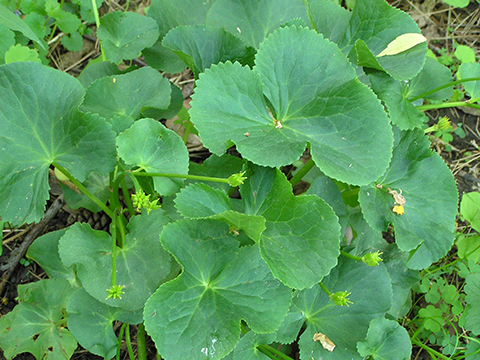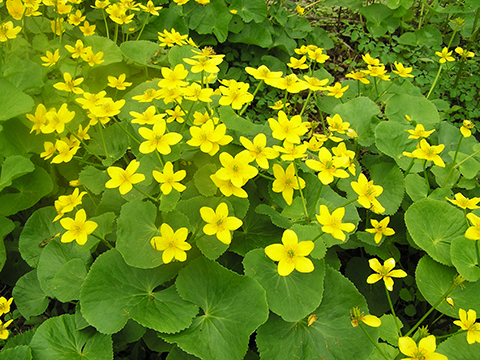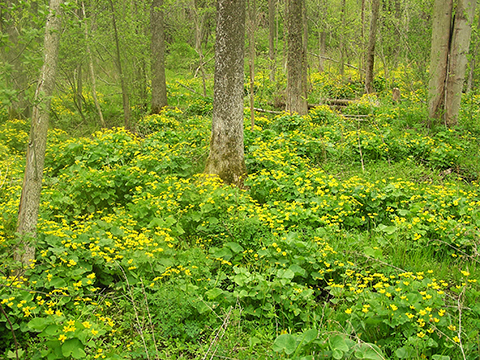 |
| Home | Ordering By Mail | Purchase Manual: Using Native Plants in Urban Landscapes |
|
|||||
Species Name: Caltha palustris
Common Name: Marsh Marigold
Zone: 1 to 9
Distribution: Quebec, Ontario south to North Carolina
Seed collection: Seed matures in late May to early June in western New York. Seed is contained in clusters of tiny upright pods that split at maturity spilling the seeds. The seed is quite small, the size of table salt or ground pepper. The pods change from light green to yellowish brown when they mature. As they dry the pods splits like pea pods allowing the seed to spill out. Each capsule may hold several dozen tiny seeds. Seed is buoyant so it will float away and be dispersed by flooding or stream flow. Collect seed stalks with pods attached when they first begin to change color and as the earliest pods have begin to split.
Seed handling: Place seed stalks inside a paper bag for drying, after one to two weeks when pods have opened shake bag to release all of the seed. Seed will be very fine, like table salt. Place seed in moist potting mix to stratify. Do not let seed dry out any further as germination may suffer. Seed can be stored under moist stratification until planted or until spring of the following year.
Germination requirements: The majority of stratified seed will germinate after 2 to 3 months cold/moist stratification, or sow immediately after collecting with germination occurring the following spring. Seed germinates quite readily after treatment. The seed is so fine that it is impossible to sow individual seeds or transplant individual seedlings. Lightly sprinkle seed over flats of potting mix and keep moist until germination occurs or for naturalizing in the wild, sprinkle seed onto bare soil in wet/moist areas where you want the plants to establish.
Ecology: Marsh marigold grows in full sun to shade in shallow flooded woods, swamps and wet meadows. It is adapted to grow in shallow, seasonally standing water where it has an ecological advantage over other plant species. It emerges in early spring and begins flowering in mid-April before the canopy trees have leafed out. Under ideal habitat it abounds in profusion presenting a stunning display of yellow flowers.
Marsh marigold emerges from the ground, flowers, sets seed and disperses its seed by late May and then goes dormant by early summer.
Marsh marigold is an ideal plant for naturalizing in those wet places where few other plants will grow. The seed is easy to collect and plant and germination rates are high. Seed can be sprinkled on top of standing water and allowed to naturally disperse. Best germination conditions are on saturated bare soils, deposited silt and exposed sediments created by flooding, siltation and fluctuating water levels.

Marsh marigold seed stalks close to maturity
Seed pods beginnning to open and shed seed in late May. Time to collect seed.

Plnats in full bloom in late April

Flooded woodland carpeted in Marsh Marigold.
this page posted January 6th, 2014